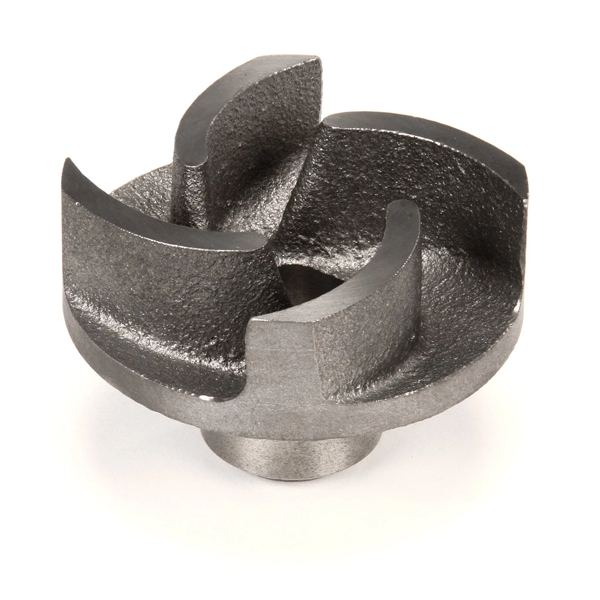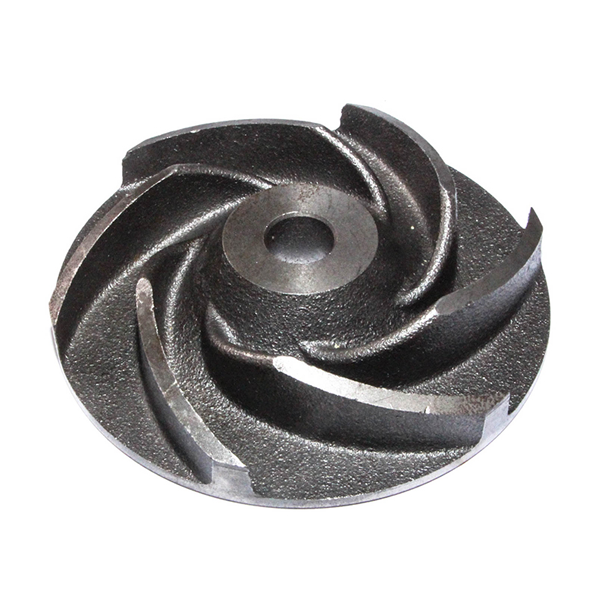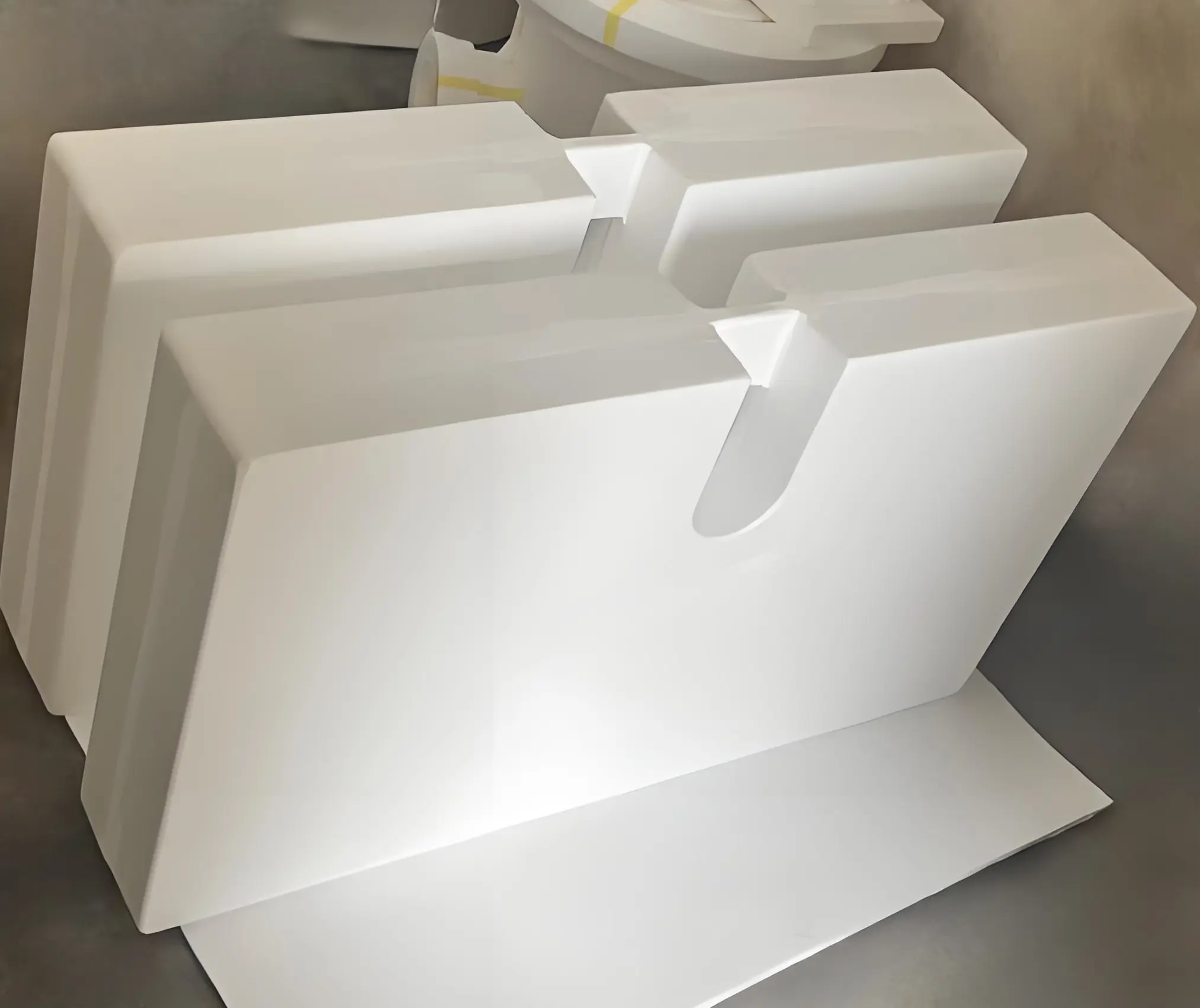Impeller casting creates precision-engineered rotary components that move fluids in pumps, turbines, and compressors across industries. Engineers rely on these cast components for their superior strength, complex geometries, and reliable performance in demanding applications.
Manufacturing costs can represent up to 40% of pump system expenses, but quality impeller casting reduces maintenance needs and extends equipment life by up to 60% in industrial applications.
Manufacturers benefit from impeller casting through improved fluid dynamics, reduced vibration, and enhanced operational efficiency. The growing demand for precision-cast impellers reflects their critical role in modern industrial systems.
Key Takeaways
- Impeller casting produces complex rotary components that efficiently move fluids in pumps, compressors, and turbines
- Advanced casting methods improve dimensional accuracy, surface finish, and mechanical properties for superior performance
- Material selection affects corrosion resistance, strength, and operating temperature limits in specific applications
- Proper design considerations ensure optimal fluid flow, minimal cavitation, and extended service life
- Quality control measures during casting prevent defects and maintain consistent performance standards

Impeller Casting Overview
What Is Impeller Casting?
Impeller casting refers to the manufacturing process that creates rotating components designed to accelerate and direct fluid flow. These precision-cast parts feature curved blades or vanes that convert rotational energy into kinetic energy, making them essential in centrifugal pumps, fans, and turbomachinery.
The casting process allows manufacturers to produce complex geometries with precise blade angles, smooth surface finishes, and consistent dimensional tolerances that machining alone cannot achieve economically.
Note: Impeller casting enables the production of intricate internal passages and compound curves that optimize fluid dynamics and system efficiency.
Common impeller casting types serve different industrial applications:
| Casting Method | Dimensional Accuracy | Surface Quality | Production Volume | Cost Effectiveness |
|---|---|---|---|---|
| Sand Casting | Moderate | Good | High volume | Most economical |
| Investment Casting | High | Excellent | Medium volume | Higher precision |
| Die Casting | High | Excellent | High volume | Best for non-ferrous |
| Permanent Mold | Good | Very good | Medium-high | Balanced approach |
These established methods help manufacturers select the optimal impeller casting approach for specific performance requirements and production volumes. Investment casting standards provide guidelines for pressure-containing components in critical applications.
How It Works
Impeller casting follows a systematic process that transforms molten metal into precision components. Manufacturers create molds based on detailed engineering drawings, pour molten metal into cavities, and control cooling to achieve desired properties.
The process involves several critical stages:
- Pattern creation establishes the impeller’s final geometry and dimensions
- Mold preparation forms cavities that shape the molten metal
- Metal pouring fills the mold under controlled conditions
- Cooling and solidification develop the final microstructure and properties
Manufacturers benefit from impeller casting in multiple ways:
Quality casting produces impellers with superior metallurgical properties compared to assembled alternatives. This approach eliminates joints and welds that can fail under stress.
Engineers can optimize blade geometries for specific fluid dynamics requirements, improving pump efficiency by 15-25% over standard designs.
The one-piece construction reduces vibration and extends bearing life in rotating equipment.
Tip: Leading pump manufacturers use computer-aided design and flow simulation to optimize impeller casting geometry before production begins.
Recent industry developments highlight the importance of advanced impeller casting:
- Global demand for high-efficiency pumps drives innovation in casting techniques and materials
- Investment casting market growth exceeds 6% annually as industries require tighter tolerances
- Stainless steel impeller casting represents over 45% of corrosion-resistant applications
- Advanced simulation software reduces development time by 30-40% while improving first-time casting success rates
- Sustainable manufacturing practices focus on reducing energy consumption and material waste in casting operations
When planning impeller casting projects, manufacturers should:
- Analyze fluid properties and operating conditions to select appropriate materials
- Design blade profiles that minimize cavitation and maximize efficiency
- Choose casting methods that balance quality requirements with production costs
- Implement quality control measures throughout the manufacturing process
- Consider post-casting operations like machining and balancing for optimal performance
Impeller casting provides the precision, strength, and performance characteristics required in modern fluid handling systems. This manufacturing approach supports complex geometries while maintaining the structural integrity needed for reliable operation.
Components of Impeller Casting
Materials and Alloys
Impeller casting uses various materials selected for specific operating conditions and performance requirements. Cast iron provides excellent wear resistance and cost-effectiveness for water pumps and low-pressure applications. Stainless steel offers superior corrosion resistance in chemical processing and marine environments. Bronze alloys combine strength with corrosion resistance for seawater pumps and specialized applications.
Each material delivers unique advantages for different impeller casting applications:
| Material Type | Key Properties | Performance Benefits | Common Applications |
|---|---|---|---|
| Gray Cast Iron | High wear resistance, good machinability, cost-effective | Excellent dimensional stability, vibration damping | Water pumps, HVAC systems, general industrial |
| Stainless Steel | Corrosion resistance, strength, temperature tolerance | Long service life, chemical compatibility | Chemical processing, food industry, marine |
| Bronze Alloys | Corrosion resistance, conductivity, anti-galling properties | Reliable performance in seawater, reduced maintenance | Marine pumps, fire systems, specialized applications |
Casting Process Variations
Different casting methods suit various impeller requirements and production volumes. Sand casting accommodates large impellers and complex geometries at lower tooling costs. Investment casting delivers superior surface finish and dimensional accuracy for precision applications. Die casting enables high-volume production with consistent quality for smaller components.
The choice of casting process affects final impeller performance and manufacturing economics:
- Sand casting allows design flexibility and handles intricate internal passages effectively
- Investment casting produces smooth surfaces that reduce fluid friction and improve efficiency
- Permanent mold casting balances quality with production speed for medium-volume requirements
- Centrifugal casting creates dense, uniform structures ideal for high-stress applications
Tip: Advanced impeller casting facilities use simulation software to optimize gating systems and predict solidification patterns before production.
Quality Control Elements
Quality control in impeller casting ensures dimensional accuracy, material properties, and surface integrity. Non-destructive testing methods detect internal defects that could cause failure in service. Dimensional inspection verifies blade angles, hub dimensions, and overall geometry meet design specifications.
Critical quality control measures include:
- Chemical analysis confirms alloy composition meets specifications
- Mechanical testing validates strength, hardness, and impact properties
- Pressure testing identifies porosity or casting defects in fluid passages
- Surface inspection ensures smooth finishes that optimize fluid flow
- Dynamic balancing reduces vibration and extends bearing life
Research shows that proper quality control during impeller casting prevents up to 90% of field failures and reduces maintenance costs significantly. Advanced inspection techniques using coordinate measuring machines and 3D scanning verify complex geometries with micron-level accuracy.
Manufacturers gain substantial benefits from implementing comprehensive quality control in impeller casting operations. These measures ensure reliable performance, reduce warranty costs, and maintain customer satisfaction in demanding applications.
Benefits in Industrial Applications
Fluid Dynamics Performance
Impeller casting delivers superior fluid dynamics through optimized blade geometries and smooth internal surfaces. The casting process creates complex three-dimensional shapes that guide fluid flow efficiently, reducing turbulence and energy losses. Precision-cast impellers achieve higher hydraulic efficiency compared to fabricated alternatives, often improving system performance by 20-30%.
Advanced impeller casting techniques enable manufacturers to optimize blade angles, reduce internal surface roughness, and eliminate flow restrictions. Computational fluid dynamics analysis guides the design process, ensuring optimal performance across the intended operating range.
Studies demonstrate that properly designed cast impellers reduce cavitation damage and extend pump life. Smooth casting surfaces minimize flow separation and pressure losses, resulting in lower operating costs and improved reliability.
Key performance advantages include:
- Enhanced hydraulic efficiency through optimized blade profiles
- Reduced cavitation and vibration in centrifugal applications
- Improved flow characteristics and pressure development
- Extended operating range with stable performance curves
Structural Integrity
Cast impellers provide exceptional structural integrity through one-piece construction that eliminates weak joints and stress concentrations. The casting process creates uniform material properties throughout the component, ensuring consistent performance under varying loads and operating conditions.
Tip: Investment casting produces impellers with excellent fatigue resistance, critical for high-speed rotating equipment in demanding industrial applications.
Customization Capabilities
Impeller casting offers unmatched design flexibility for specialized applications. Manufacturers can create custom blade profiles, hub configurations, and internal passages that optimize performance for specific operating conditions. This customization capability allows engineers to match impeller characteristics precisely to system requirements.
The casting process accommodates complex geometries that would be impossible or prohibitively expensive to machine. Internal cooling passages, compound blade curves, and integrated wear rings can be cast directly into the component, reducing assembly costs and improving reliability.
Modern impeller casting foundries use parametric design tools and rapid prototyping to accelerate custom development. This approach reduces lead times while ensuring optimal performance in specialized applications such as chemical processing, power generation, and aerospace systems.
Quality impeller casting provides the performance, reliability, and customization required in modern industrial fluid systems. The combination of superior materials, precise manufacturing, and optimized geometries delivers measurable improvements in efficiency and service life.
Industrial Applications
Water Treatment and Municipal Systems
Impeller casting plays a crucial role in water treatment facilities and municipal infrastructure. Cast iron and bronze impellers handle potable water distribution, wastewater processing, and storm water management systems. These applications require corrosion-resistant materials that maintain hydraulic efficiency over extended service periods.
Municipal pump stations rely on large-diameter cast impellers that move millions of gallons daily. The casting process enables complex vane geometries that optimize flow patterns and minimize energy consumption in continuous-duty applications.
Chemical Processing Industry
Chemical processing facilities demand specialized impeller casting solutions that resist aggressive chemicals while maintaining precise tolerances. Stainless steel and specialty alloy impellers handle acids, bases, solvents, and reactive compounds safely.
Investment casting produces smooth surface finishes that prevent product contamination and facilitate cleaning procedures. The one-piece construction eliminates crevices where bacteria or residues could accumulate, meeting strict sanitary standards.
Power Generation
Power plants use large-scale impeller casting for cooling water circulation, fuel handling, and steam generation systems. High-temperature applications require specialized alloys that maintain strength and dimensional stability under thermal cycling.
Combined-cycle plants depend on precision-cast impellers in boiler feed pumps, condensate systems, and auxiliary cooling circuits. These components operate continuously at high pressures and temperatures, demanding exceptional reliability.
Marine and Offshore
Marine environments present unique challenges for impeller casting due to seawater corrosion and fouling organisms. Bronze and stainless steel impellers provide superior corrosion resistance while maintaining structural integrity under shock loads.
Offshore drilling platforms use fire-resistant cast impellers in emergency systems, ballast control, and crude oil transfer applications. These specialized components must perform reliably in harsh conditions with minimal maintenance access.
HVAC and Building Systems
Commercial buildings rely on cast impellers in chilled water systems, hot water circulation, and fire suppression equipment. The casting process produces quiet-running impellers that minimize vibration and extend bearing life in occupied spaces.
Data centers require precision-cast impellers in cooling systems that maintain consistent temperatures for sensitive electronic equipment. Advanced blade profiles optimize airflow while reducing energy consumption in 24/7 operations.
Impeller Casting Methods
Sand Casting Process
Sand casting remains the most versatile method for impeller casting, accommodating components from small circulation pumps to large industrial turbines. This process uses sand molds formed around patterns to create the impeller cavity. Manufacturers benefit from lower tooling costs and the ability to produce complex internal geometries that other methods cannot achieve economically.
The sand casting process excels in flexibility, allowing rapid design changes and prototype development. Green sand systems enable faster production cycles, while resin-bonded sands provide superior surface finish and dimensional accuracy for precision impellers.
Investment Casting Excellence
Investment casting produces impellers with exceptional surface quality and dimensional precision. This process uses ceramic molds created around wax patterns, resulting in smooth surfaces that reduce fluid friction and improve hydraulic efficiency. The method suits medium-volume production of complex geometries requiring tight tolerances.
Investment casting delivers several advantages for impeller manufacturing:
| Feature | Sand Casting | Investment Casting |
|---|---|---|
| Surface Finish | Good | Excellent |
| Dimensional Accuracy | ±3-5mm | ±0.5-1mm |
| Design Complexity | High | Very High |
| Production Volume | High | Medium |
| Tooling Cost | Low | Moderate |
Specialized Techniques
Advanced impeller casting methods address specific performance requirements and production challenges. Centrifugal casting creates dense, directionally solidified structures ideal for high-stress applications. Vacuum casting eliminates porosity and improves material properties in critical components.
Lost foam casting enables extremely complex geometries while maintaining cost-effectiveness for medium-volume production. This method suits impellers with intricate internal passages and cooling channels that enhance thermal management in high-temperature applications.
Note: Emerging additive manufacturing techniques complement traditional impeller casting by enabling rapid pattern production and design validation before full-scale manufacturing.
Recent innovations in impeller casting include computer-controlled pouring systems that ensure consistent fill rates and minimize defects. Electromagnetic stirring during solidification improves grain structure and mechanical properties, particularly beneficial for high-performance applications.
Selection and Manufacturing Considerations
Design Requirements
Selecting the optimal impeller casting approach requires careful analysis of operating conditions, performance specifications, and production requirements. Engineers must consider fluid properties, pressure ranges, temperature limits, and corrosion resistance when choosing materials and casting methods.
Critical design factors include:
- Operating Speed: High-speed applications require precise balancing and superior material properties
- Fluid Characteristics: Corrosive or abrasive fluids demand specialized alloys and surface treatments
- Pressure Requirements: High-pressure systems need dense, defect-free castings with proven mechanical properties
- Temperature Conditions: Elevated temperatures require heat-resistant alloys and optimized cooling designs
- Efficiency Targets: Advanced blade geometries and surface finishes improve hydraulic performance
Manufacturing Process Selection
Choosing the appropriate casting method depends on production volume, quality requirements, and economic considerations. Sand casting suits low to medium volumes with complex geometries. Investment casting provides superior accuracy for precision applications. Die casting enables high-volume production of smaller components.
Manufacturers should evaluate:
- Production volume and delivery schedules
- Quality specifications and tolerance requirements
- Material selection and alloy availability
- Secondary operations like machining and balancing
- Cost targets and competitive positioning
Quality Assurance
Comprehensive quality control ensures impeller casting meets performance and reliability standards. Testing protocols verify material properties, dimensional accuracy, and surface integrity throughout the manufacturing process.
Essential quality measures include:
- Incoming Material Inspection: Chemical analysis and mechanical testing of raw materials
- Process Monitoring: Temperature control, mold quality, and pouring parameters
- Non-Destructive Testing: Radiographic inspection, ultrasonic testing, and dye penetrant examination
- Dimensional Verification: Coordinate measurement and profile analysis of critical features
- Performance Validation: Flow testing and dynamic balancing before delivery
Tip: Leading impeller casting suppliers maintain ISO 9001 certification and industry-specific quality standards to ensure consistent results and customer satisfaction.
For manufacturers seeking reliable impeller casting solutions, partnering with an experienced foundry ensures access to advanced manufacturing capabilities, proven quality systems, and technical expertise. Professional casting suppliers provide comprehensive support from design optimization through final inspection and delivery.
Modern impeller casting combines traditional metallurgical knowledge with advanced manufacturing technology to produce components that meet demanding performance requirements while maintaining competitive costs and delivery schedules. Shengrong offers comprehensive impeller casting foundry services with decades of experience in precision manufacturing and quality assurance.
FAQ
What materials are commonly used in impeller casting?
Common materials include gray cast iron for general applications, stainless steel grades like CF8M and CF3M for corrosive environments, and bronze alloys for marine applications. Material selection depends on operating conditions, fluid compatibility, and performance requirements.
How does impeller casting compare to machining from solid material?
Impeller casting offers significant advantages over machining, including lower material costs, complex geometries that are impossible to machine, and superior grain structure from controlled solidification. Casting also eliminates material waste and reduces production time for complex shapes.
What quality standards apply to impeller casting?
Industry standards include ASTM A957 for steel investment castings and ASTM A997 for surface acceptance criteria. Additional specifications may apply based on application requirements and customer standards.
Can impeller casting produce custom designs?
Yes, casting processes excel at producing custom impeller geometries optimized for specific applications. Investment casting techniques enable complex blade profiles, internal passages, and specialized features that improve performance.
What is the typical lead time for impeller casting projects?
Lead times vary based on complexity, material selection, and production volume. Standard designs may require 4-6 weeks, while custom impellers with new tooling typically need 8-12 weeks from design approval to delivery.
How is quality controlled during impeller casting?
Quality control includes incoming material inspection, process monitoring, non-destructive testing methods, dimensional verification, and performance validation. Advanced foundries maintain comprehensive documentation and certification programs.





